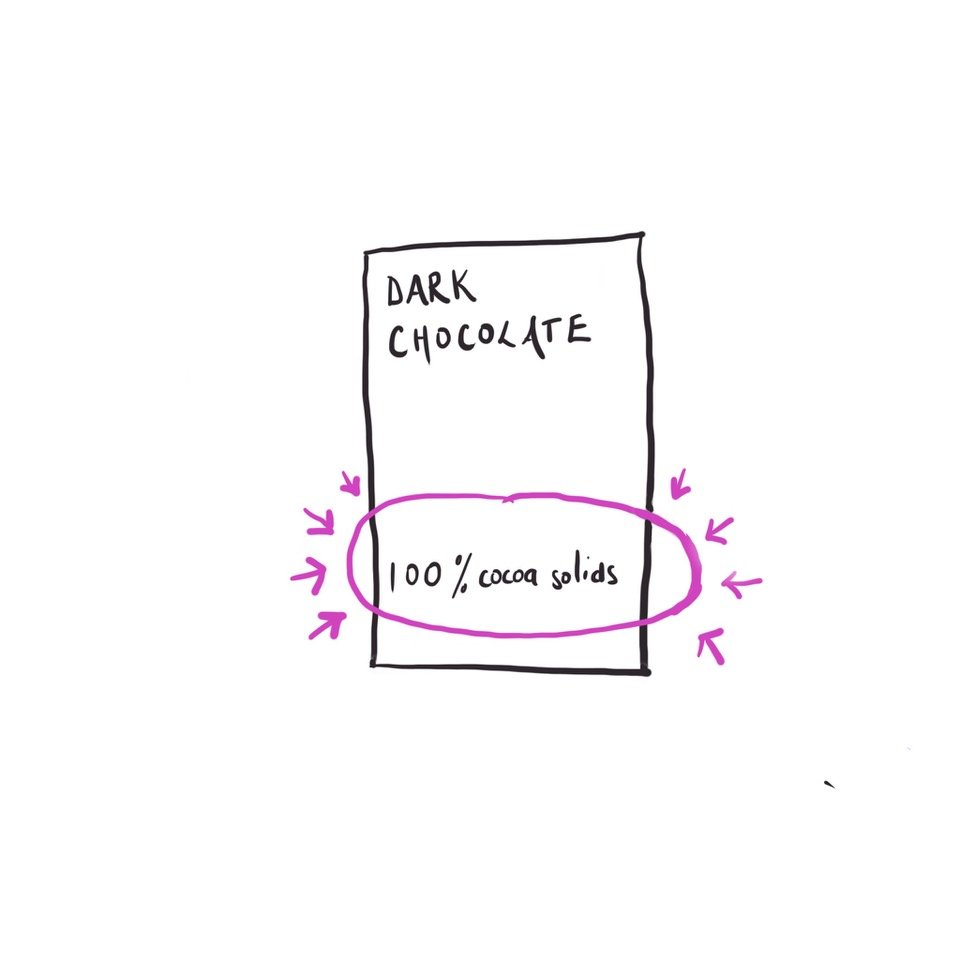Little Step No. 64
What to do:
Check the cocoa content of your dark chocolate.
Why this step works:
Recently, we’ve done lots of journeying up and down the country for Uni open days. Sometimes in a car, sometimes on a train, but always involving little breaks for a drink and a rest.
A couple of times whilst queuing for a drink I've picked up a little bar of ‘dark’ chocolate. After a quick ingredient scan though I've put it back down - realising that the ‘dark’ chocolate I thought I was buying, wasn’t really that ‘dark’ after all…
You’ll often hear people talk about about the benefits of chocolate – and yes it’s true there can be benefits - mainly down to the cocoa (or cacao) it contains. Cocoa contains flavonoids which may have antioxidant, anti-inflammatory and even anti-viral effects. They may also protect gut, cardiovascular and brain health.
Up to now, this all sounds like a great endorsement for a daily chocolate bar. But, and there is a big BUT here. You only really get the health benefits if you’re eating dark chocolate with a high cocoa content. I recommend AT LEAST 80% COCOA SOLIDS, and if you want maximum benefits, head to the dark side and choose the seriously dark stuff that delivers 100% COCOA SOLIDS!
When I picked up that little bar of 'dark' chocolate last weekend I was surprised to find it only contained 60%, just as surprised as the weekend before when another one was only 56%. Not only do you get less cocoa with a lower percentage, but you get a higher sugar content too. Dark chocolate can be a real lifesaver when you're trying to cut down on sugary snacks, but attention to detail is key herebecause my view is that it really needs to be at least 80% cocoa solids to be a healthy substitute.
So. Dark chocolate. Check the label before you buy. Here's some of my favourites: Lindt’s 85%, 90% and 99% bars, Choc Amor’s 85% Tumaco Buttons & 100% Madagascan chocolate and Montezuma’s Absolute Black (100%) range. Hope you enjoy x
